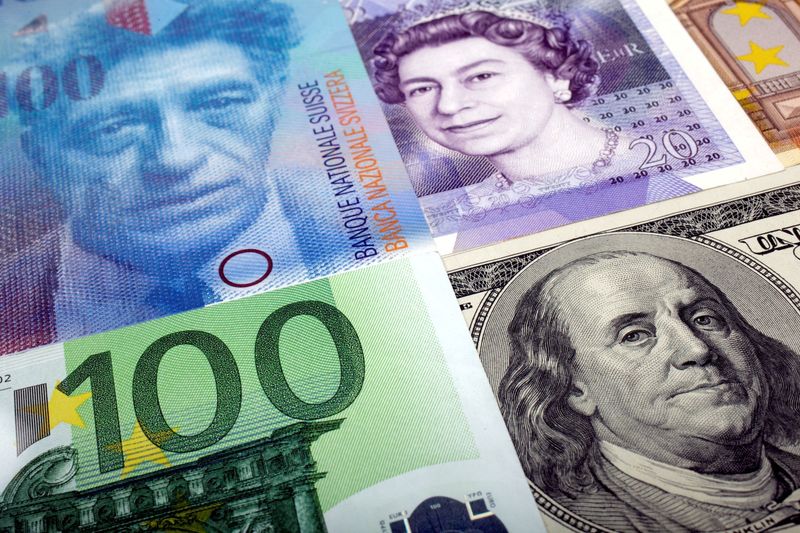LONDON (Reuters) -The U.S. dollar fell for a second day on Wednesday as investors became less worried about the risk of Russia invading Ukraine and awaited the release of minutes from the U.S. Federal Reserve’s January meeting.
European equity markets were mixed, having rallied on Tuesday after Russia said it would withdraw some troops from Ukraine’s border.
U.S. President Joe Biden said more than 150,000 Russian troops were still in a “threatening position” and NATO urged Moscow to prove it was pulling back.
Ukraine said the online networks of its defence ministry and two banks were hit by a cyber attack.
In currency markets, the moves were small. The U.S. dollar index edged lower and was down 0.2% on the day at 95.847 by 1213 GMT.
“More optimism around a diplomatic solution in Ukraine may keep applying some pressure on the dollar and the other low-yielders today,” ING FX strategists wrote in a note to clients.
“Given the magnified impact on crude, CAD and NOK should keep struggling to fully cash in on improved geopolitical sentiment,” they added, referring to the Canadian dollar and Norwegian crown.
Long-standing expectations that the U.S. Federal Reserve will raise rates provided a reason for the dollar’s losses to be limited.
Markets are pricing in a 57.5% chance of a 50 basis points hike at the Fed’s next meeting on March 16 and a 42.5% chance of a 25 bps hike.
The minutes from the Fed’s January meeting will be released later in the session.
“We would guess the minutes turn out to be ‘dovish’ – not because they are actually dovish but because it would be hard to out-hawk market expectations at the moment, and we seem primed for a further feel-good risk rally, but will wait to see,’ wrote Elsa Lignos, global head of FX strategy at RBC Capital Markets, in a client note.
As oil prices recovered, the Canadian dollar strengthened slightly against the U.S. dollar as did the Norwegian crown.
The Australian dollar, which is seen as a proxy for risk appetite, was up 0.4% at $0.7177 while the New Zealand dollar was also slightly higher on the day.
The safe-haven yen was a touch lower versus the dollar, at 115.700.
The euro edged higher, up 0.2% on the day at $1.13825. Euro-swiss was up 0.2%, having gained 0.4% so far this week.
“If we got to a scenario of actual progress in dialogue with Russia then a more pronounced EUR/CHF move higher would be likely,” wrote MUFG head of research Derek Halpenny in a note to clients.
The British pound was up 0.1% against the dollar at $1.35605 but steady versus the euro, after data showing UK inflation hit a nearly 30-year high of 5.5%.
The Bank of England has already raised interest rates twice since December and financial markets expect a further rate rise on March 17 after the BoE’s next meeting.
In cryptocurrencies, bitcoin was little changed, down 1.1% at $44,098.
(Reporting by Elizabeth Howcroft; Editing by David Holmes and Barbara Lewis)



















